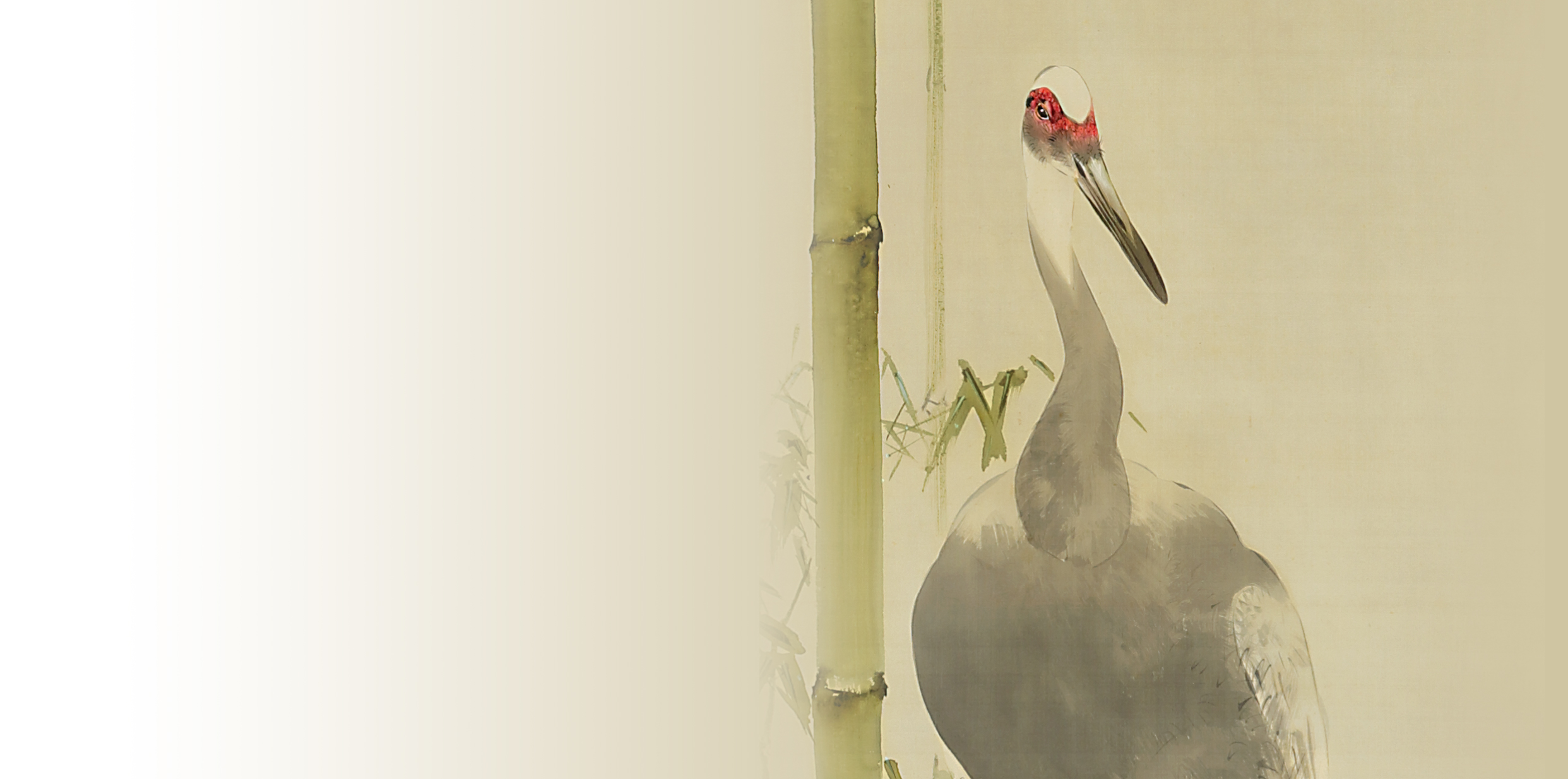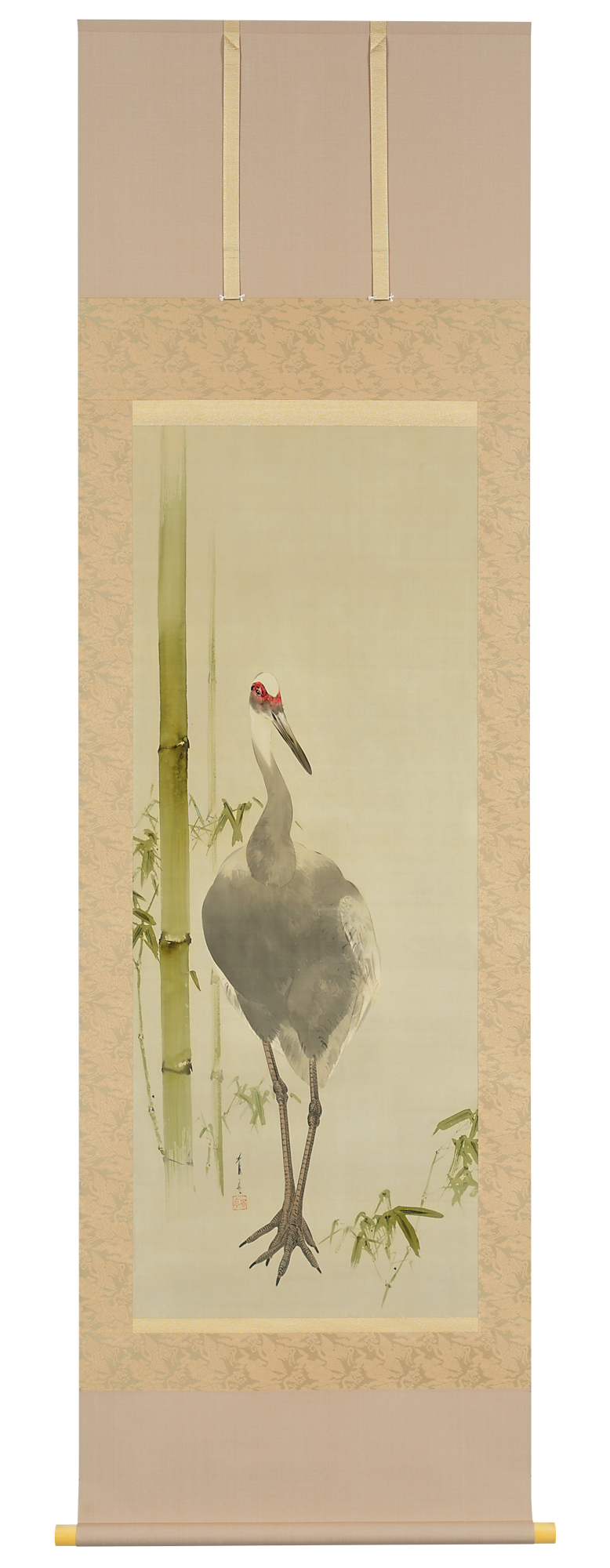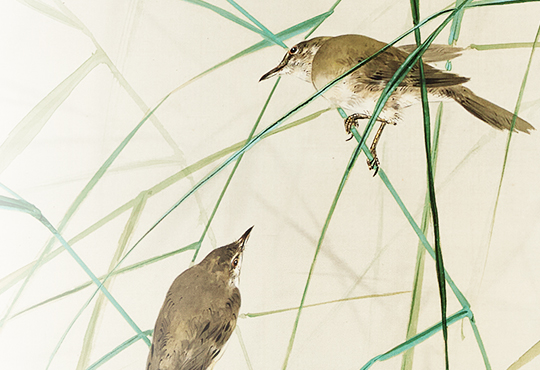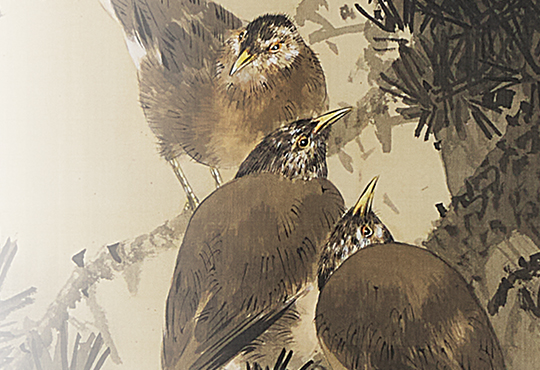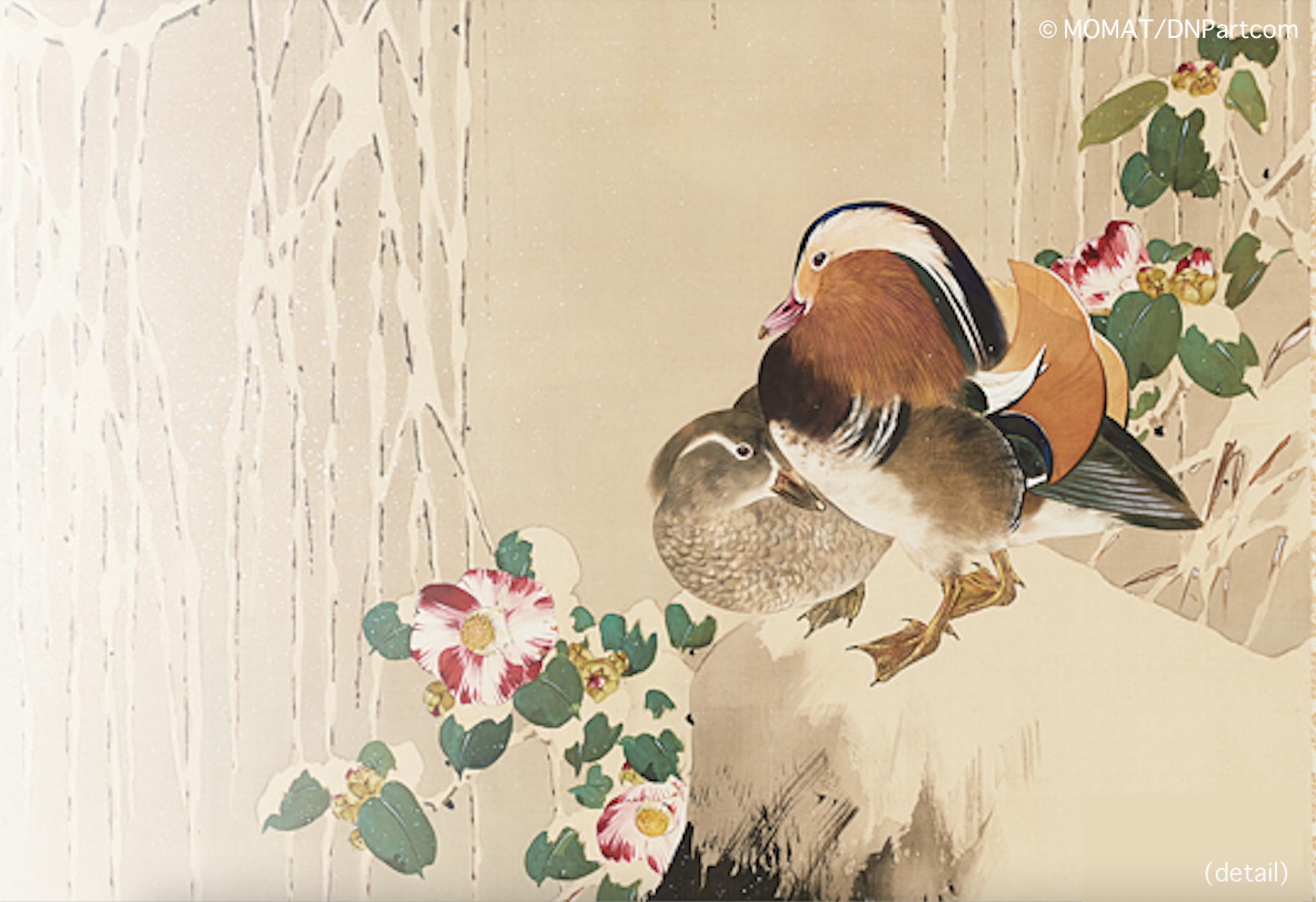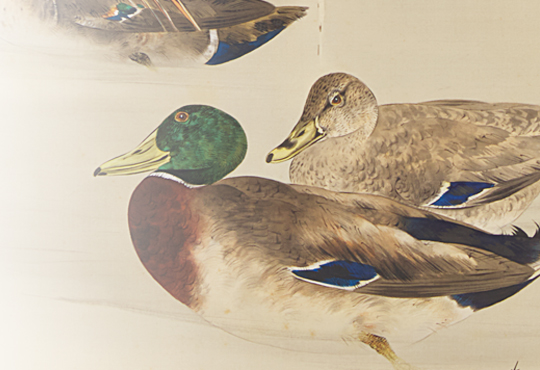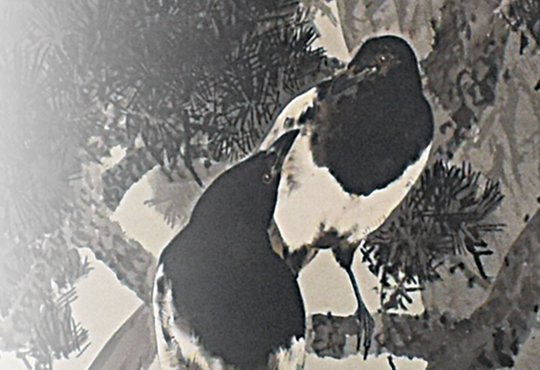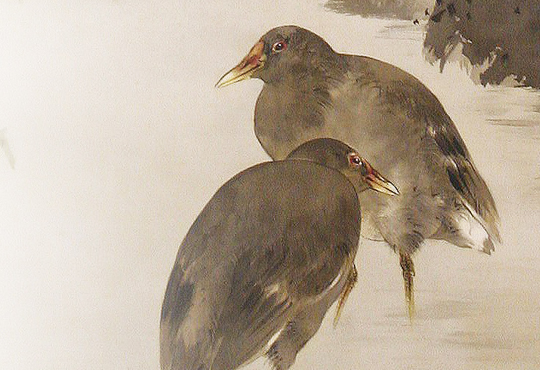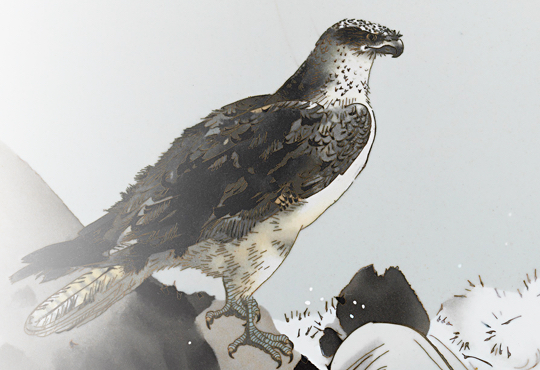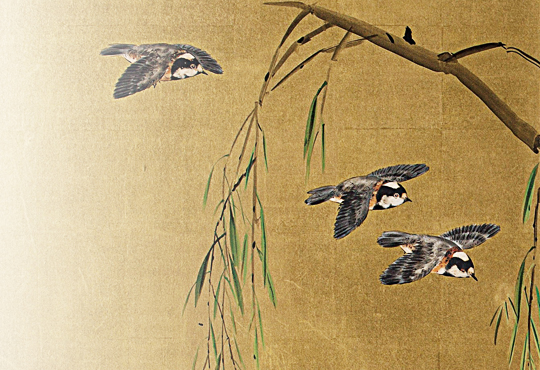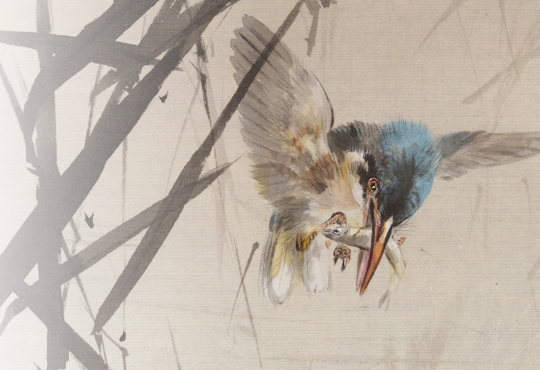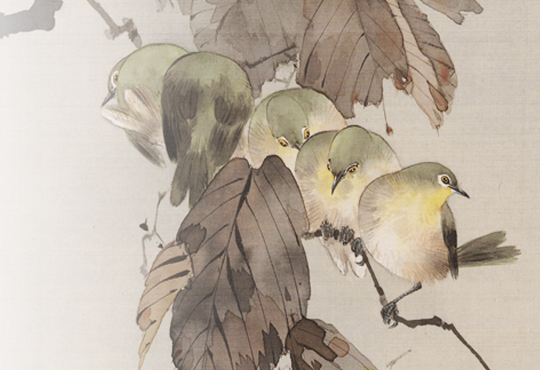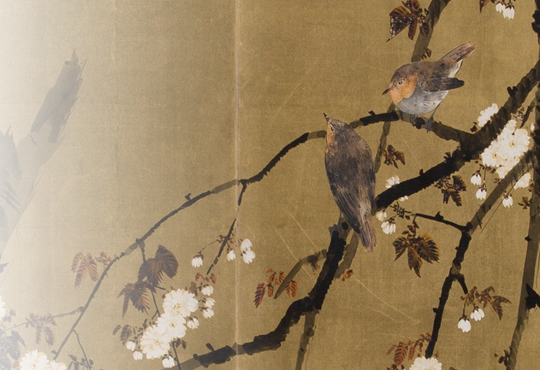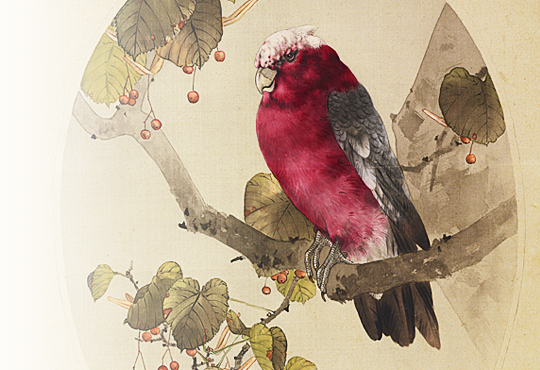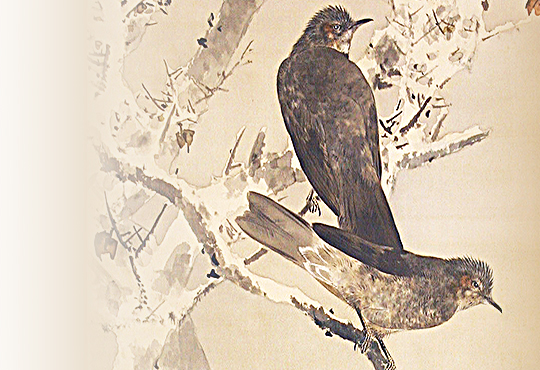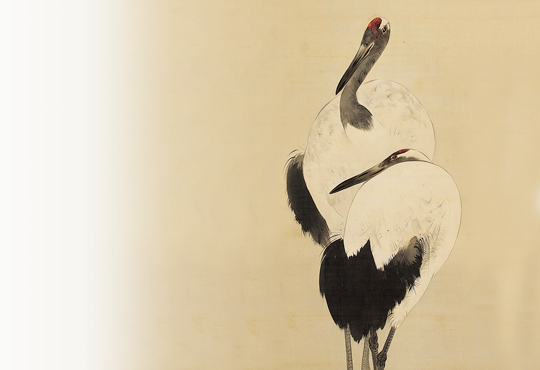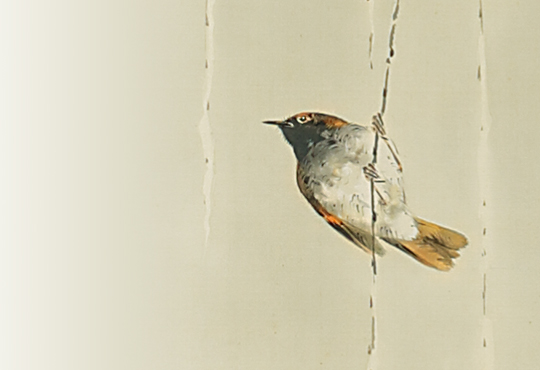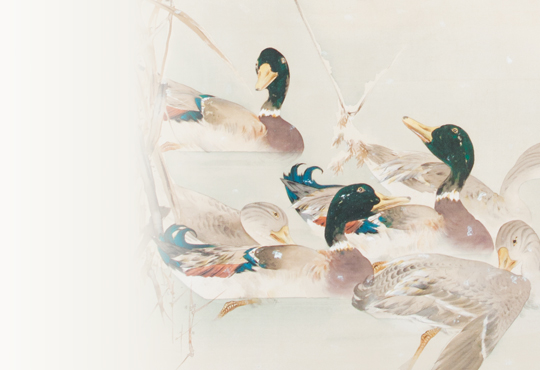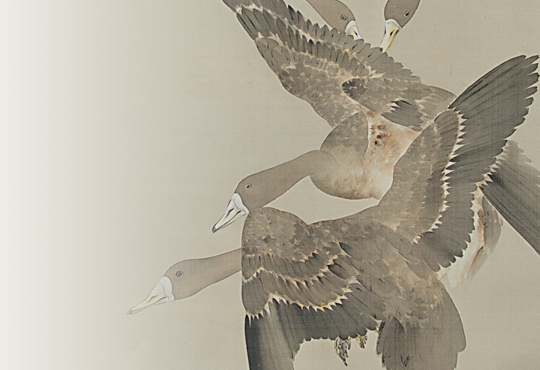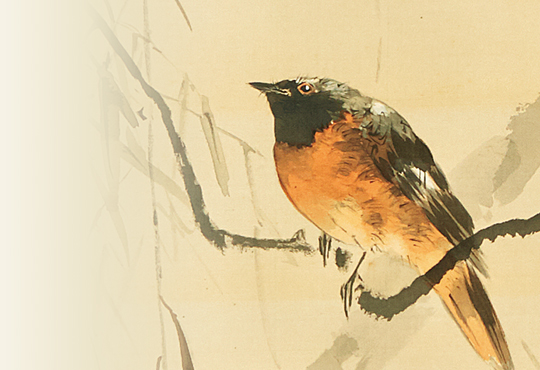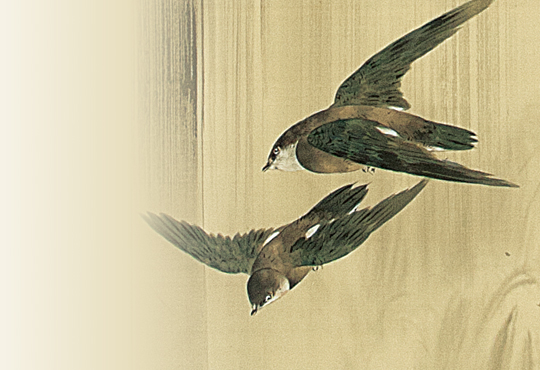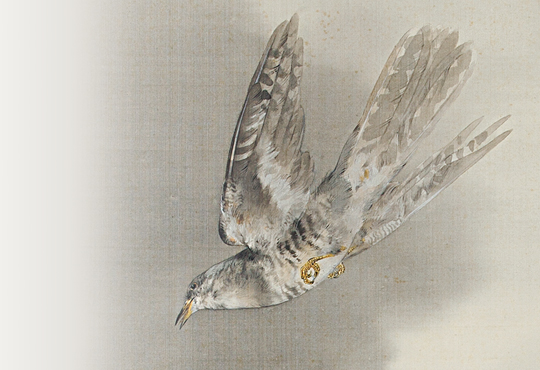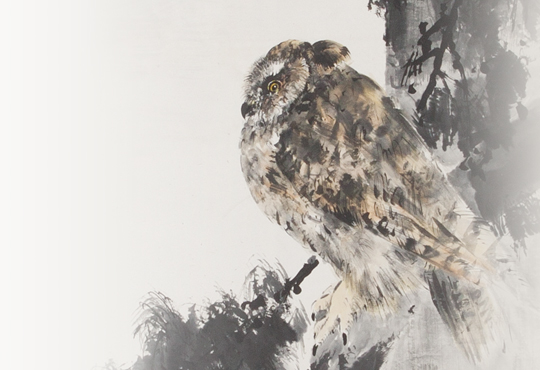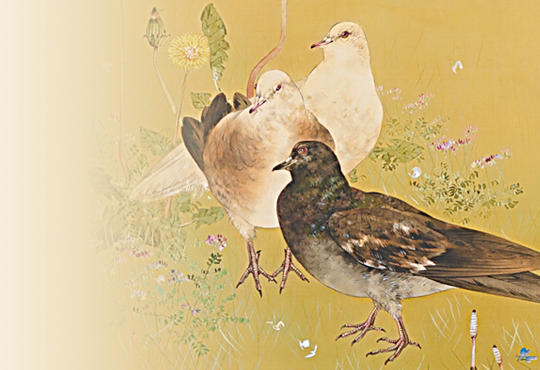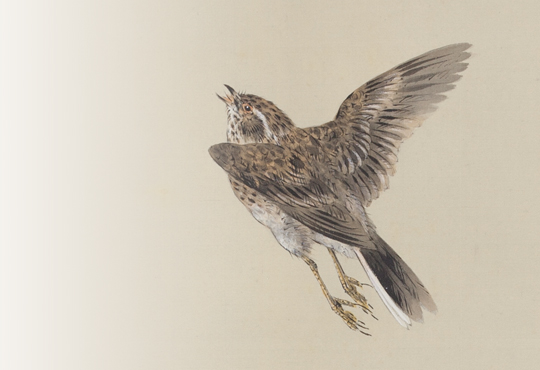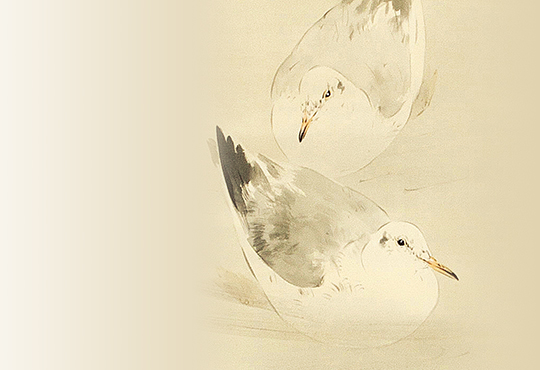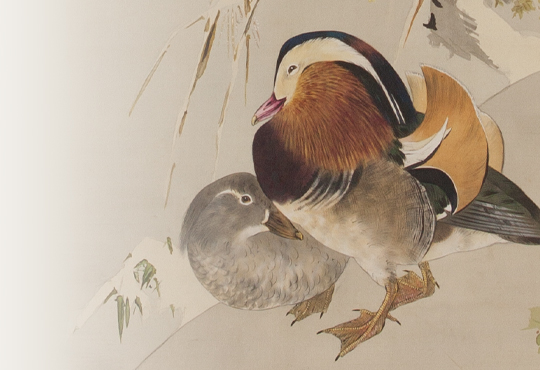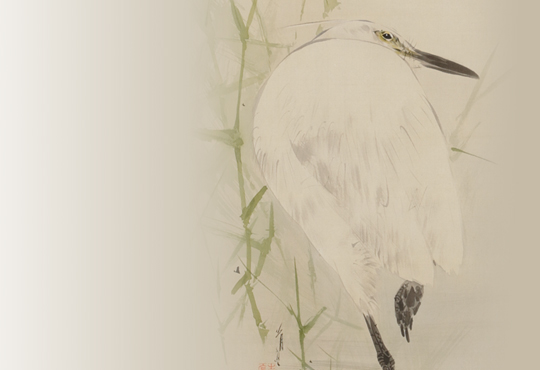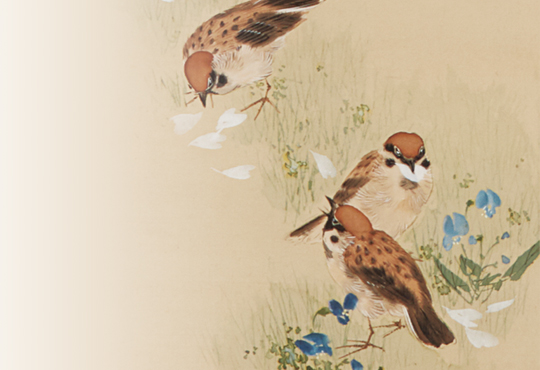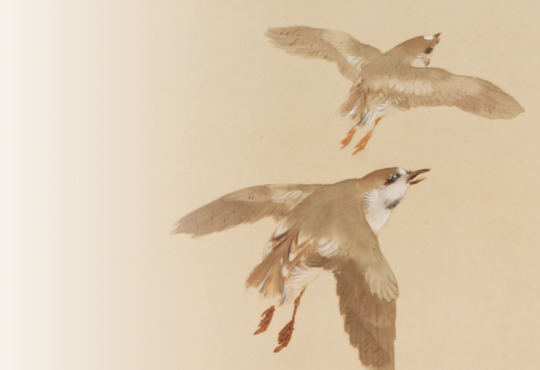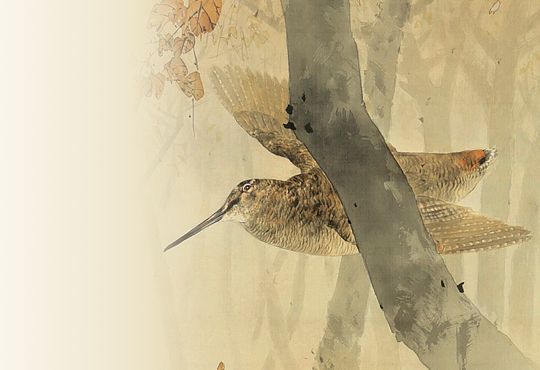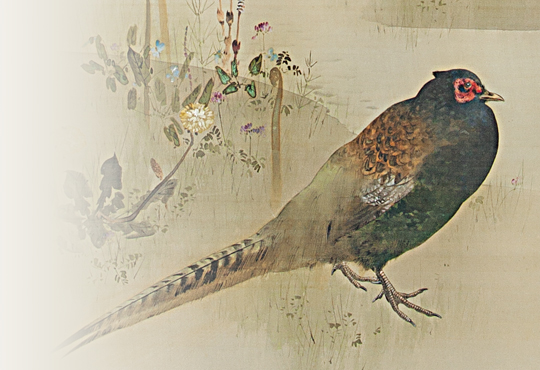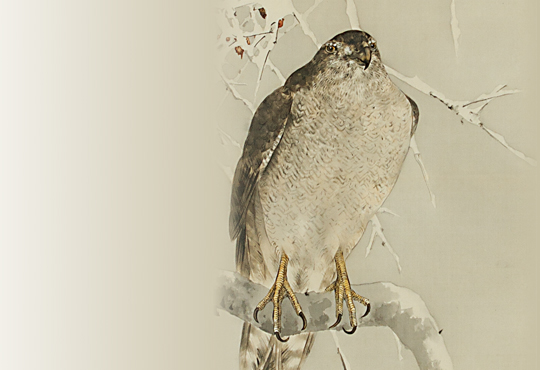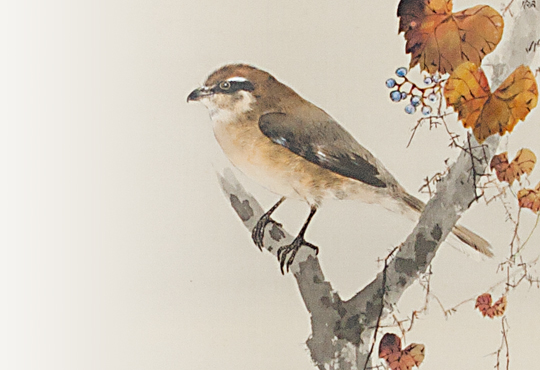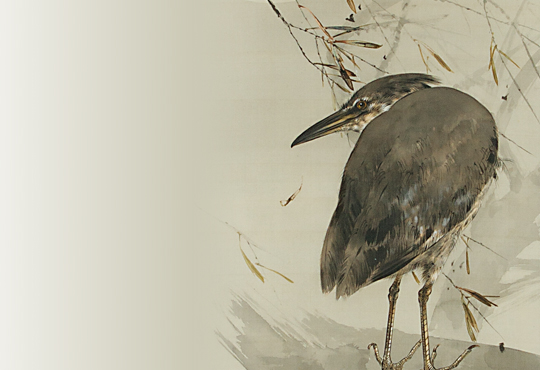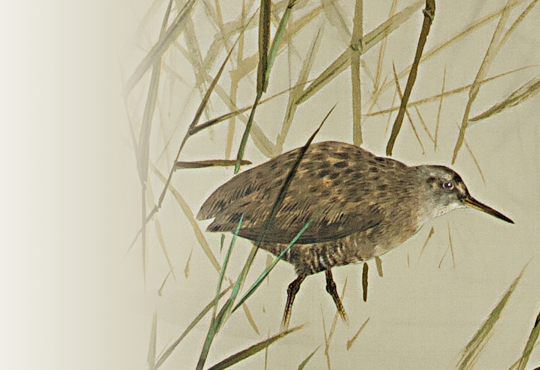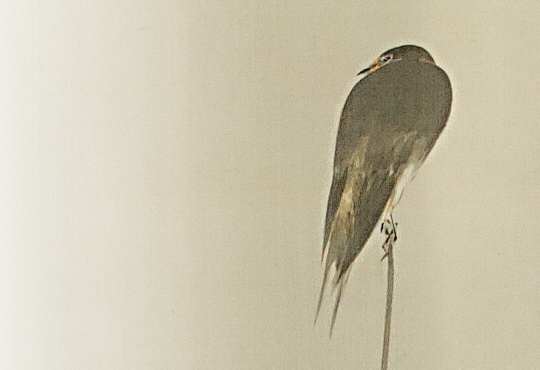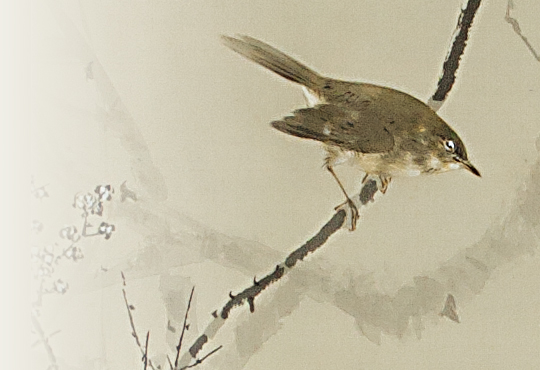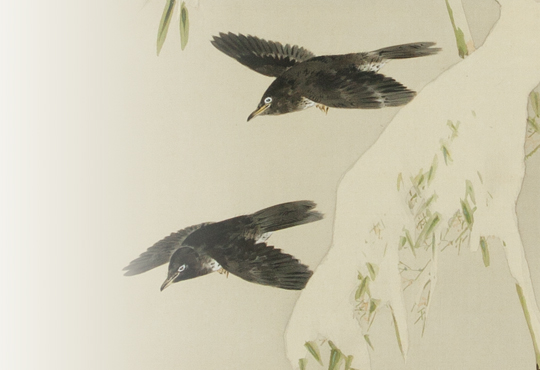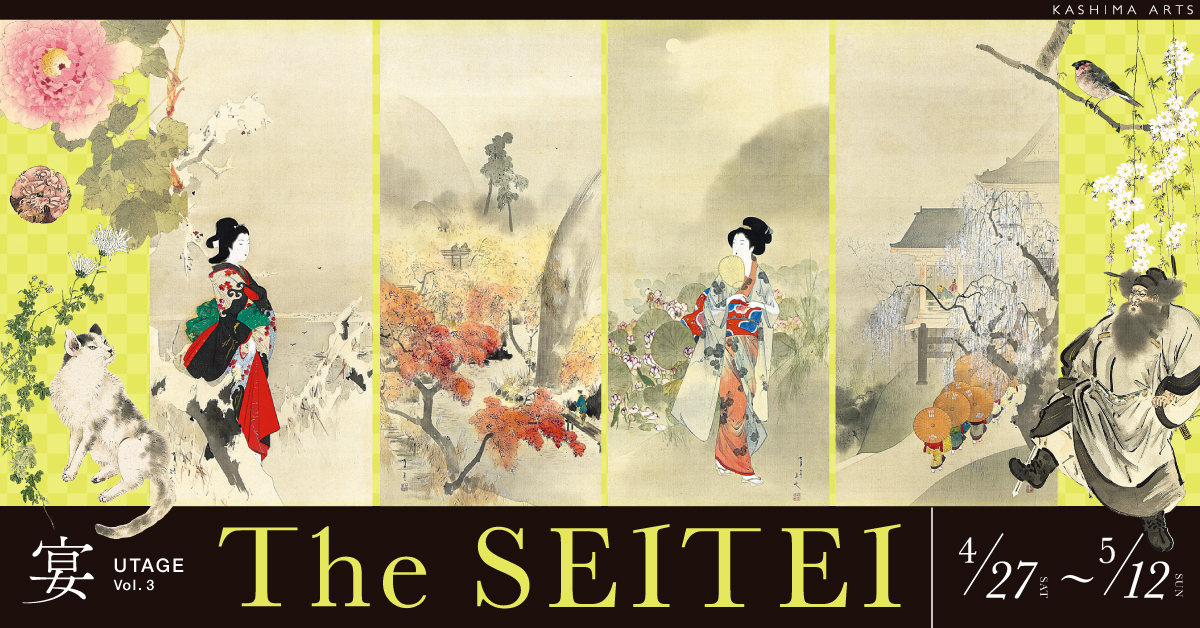vol.22 Portrait of a Crane: White-naped Crane and Bamboo
Let me introduce myself, my name is “White-naped Crane”. I come from the great marshes of eastern Russia or northern China, and I was raised with one sibling by two strong parents. The first time I came to Japan was in the fall of my first birth year. I had only just learned how to fly, but since my parents set out so suddenly, I followed in desperation. At the end of the extremely long journey, I saw small islands beyond the wide sea and that is the story of how I first came to Japan. We lived in this surprisingly comfortable, mysterious, and strangely shaped marsh, called a rice field. I left from my family the following spring, but it has since become custom to spend winters in Japan. I enjoy the southern island, Kyushu, but I also visit its neighboring islands, Honshu, and Shikoku, at times.
There’s something I’d like to discuss. When you think of cranes, do you think of the Japanese Crane, a black and white bird with a red-crowned head? Yes, they look nice and seem popular, but could you pay attention to the name? While the term, the Japanese name of Japanese Crane, “Tancho” literally means red top, that is the only notable feature of the term. My Japanese name, however, is “Manazuru” (lit: true crane). This is important, so I’ll say it twice. I, White-naped Crane, am, indeed, the true crane. Those who originally named me understood the true value of birds. I hope you all can as well.
Here is another thing I want to tell you. Many assume that us cranes and herons are one and the same, but this is completely rude, for we are entirely different. Sure, we have long and slender beaks, necks and legs, share the same body shape and live by the waterside. However, we are completely different in size, I mean we’re basically the same size as you humans. Notice our strong body and muscular legs, straight neck and fearless gaze. Herons aren’t even that big. I mean, the largest heron in this area, the Grey Heron, are only about two thirds the size of me! The only birds larger than me in Japan would be the swans, the Japanese Crane and, just by their wingspan, the Short-tailed Albatross.
Oh, and one last thing. My natural habitat are large, wide marshes that are free of obstruction. Yet, these humans that inhabit Japan like to place us by pine trees and bamboo, which is extremely irritating. Not only are they an eyesore, but they make it hard to walk and fly. Once, this really troubled me. Why was I brought to a bamboo field, the thing I hate most? I remember the stress, carefully walking step by step and finally finding my way out. Suddenly, I see this strange creature, a human called “Watanabe Seitei”, waiting outside the field, who- of all things- tells me, “don’t move”. As he stares at me, he suddenly puts his head down and does some movement. He continues this in repetition. He must’ve been some crazy creature. I wonder how much time he spent looming over this.
As much as I complain, I like this portrait. It always helps if the model is the best, but this human, “Watanabe Seitei”, is not too bad himself. But really, I’m just happy that something this beautiful will remain forever.
Author : Masao Takahashi Ph.D. (Ornithologist)
Dr. Masao Takahashi was born 1982 in Hachinohe (Aomori prefecture) and graduated from Rikkyo University’s Graduate School of Science. Dr. Takahashi specializes in behavioral ecology and the conservation of birds that inhabit farmlands and wet grasslands. Focusing on the relation between birds and art, he has participated in various museum and gallery talks.
